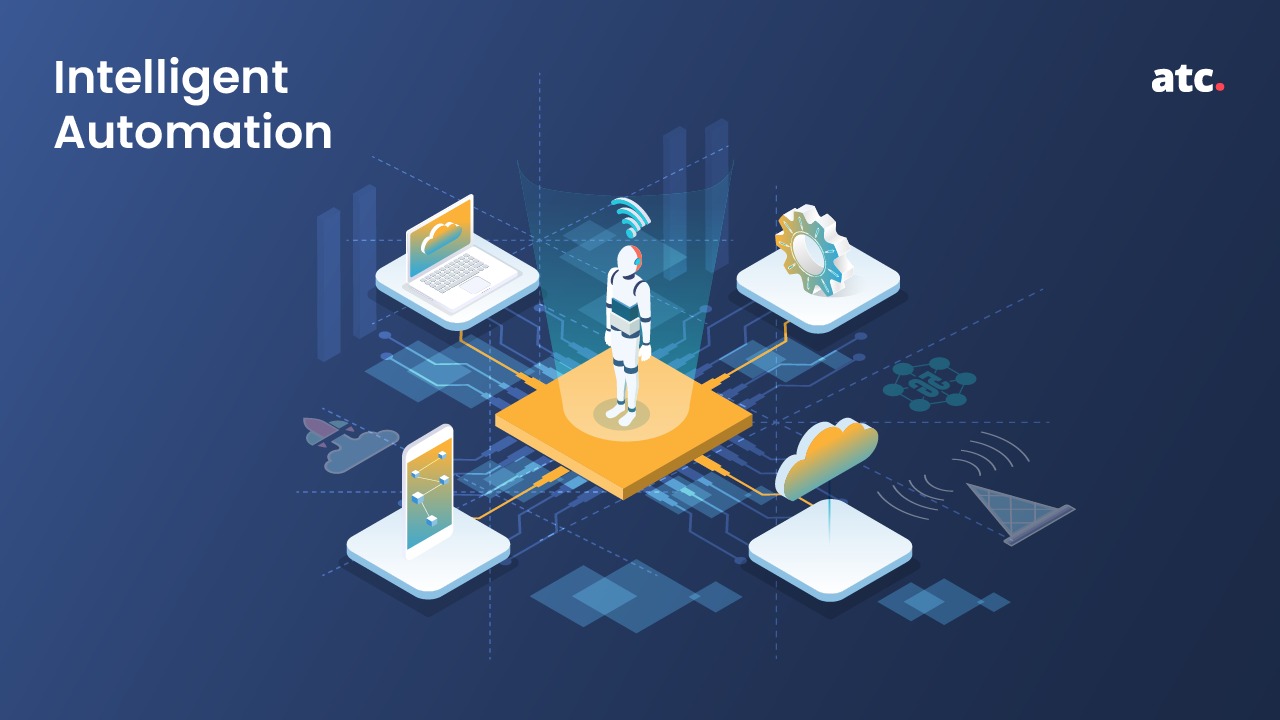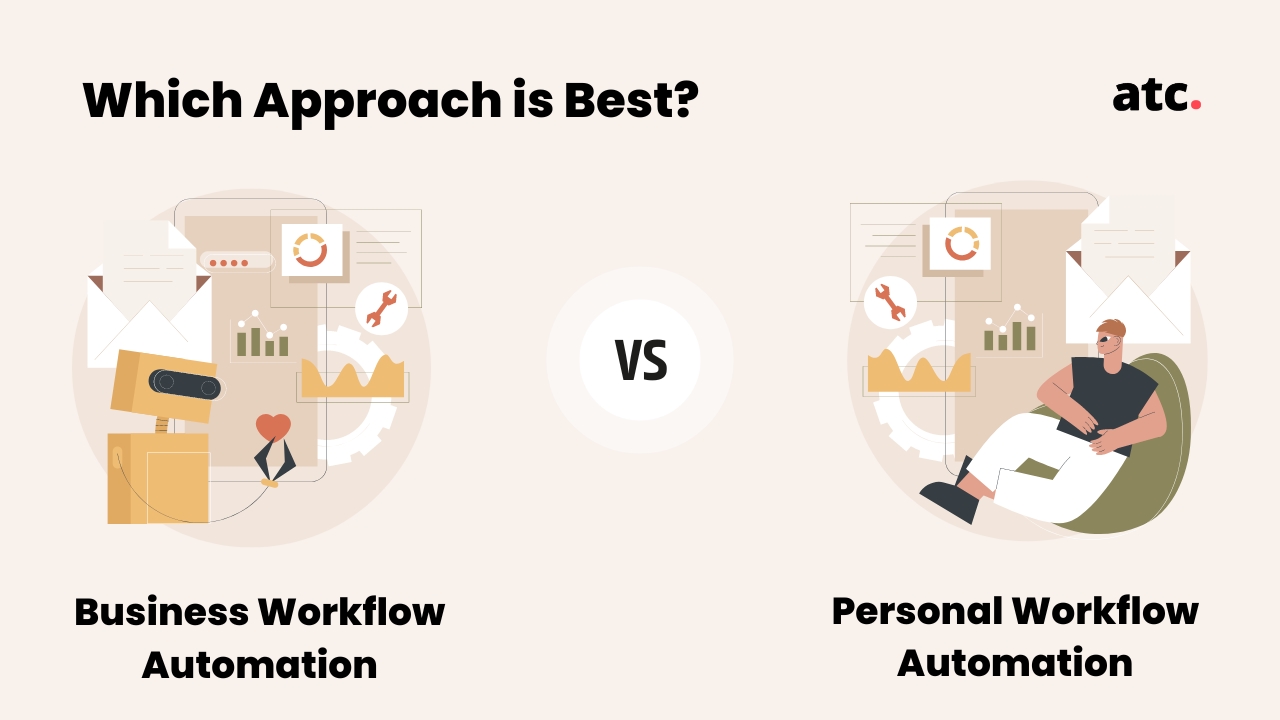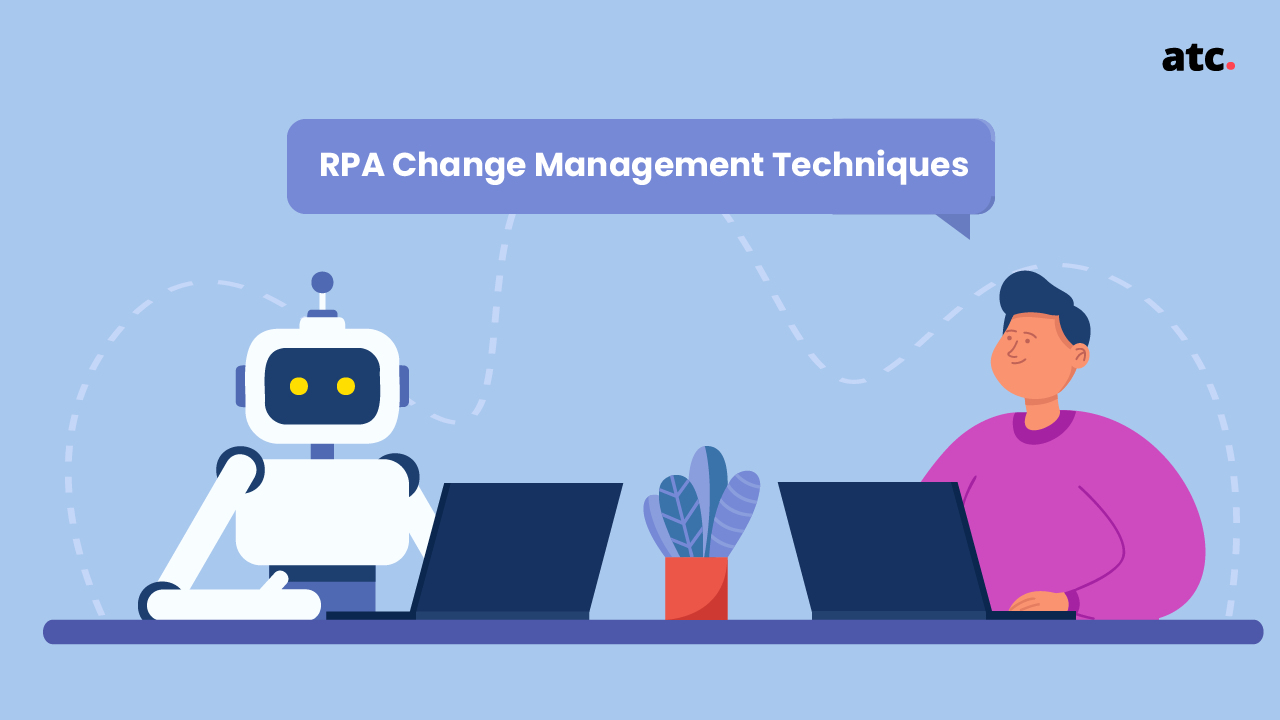Subscribe to the blog
While RPA and AI have been around for decades, very few successful companies actually thought of fusing them to automate business processes. Today, with the acceleration of digitalization, intelligent automation has become a critical strategy for global organizations to increase efficiency and productivity.
Research shows that there are 51.9 Billion connected devices in the world. These connected devices generate tons of data sets that companies haven’t fully utilized. As a consequence, they fail to keep up with evolving customer demands.
Thankfully, intelligent automation helps companies streamline business processes and leverage data for enhanced decision-making.
This guide will take you through the components of intelligent automation, how successful businesses are using the technology, and its benefits.
What is Intelligent Automation and Which Are Its Main Components?
Intelligent automation is an amalgamation of multiple technologies, tools, and platforms, such as AI, RPA, analytics, and more, to help companies create end-to-end processes that can adapt and accelerate operations.
However, implementing the technology isn’t always easy. It requires business leaders to understand its core components and how they can utilize them to improve their business functions.
Here are the top three components of intelligent automation:
- Robotic Process Automation (RPA): Robotic process automation uses automation technologies to perform repetitive and labor-intensive tasks such as filling out forms, extracting data, performing calculations, and more to free up your team’s time and help them focus their efforts on critical tasks.
- Artificial Intelligence (AI): With machine learning and complex algorithms, AI helps RPA bots to analyze and structure data sets to get actionable insights for your business.
- Business Process Management (BPM): The final component of intelligent automation helps companies streamline and automate their workflows to provide better agility and efficiency.
Combining AI, RPA, and BPM, the solution improves automation results and the quality of customer interactions across platforms.
Is Intelligent Automation the Same as AI and Automation?
AI is a subset of intelligent automation. Intelligent Automation combines AI with other automation tools to help businesses gather insights from large data sets and make better decisions.
Now that the first part of the question is covered, let’s move to the next.
A fundamental difference between automation and intelligent automation initiatives is that the former focuses on using RPA to automate mundane tasks, and the latter focuses on using multiple technologies and tools to automate complex business processes.
So, which one is better?
Automation is the stepping stone for organizations. If you are just getting started with automation initiatives, it makes sense to integrate RPA with your workflow first and then think of infusing other technologies.
But for organizations who want to achieve growth momentum and scale their automation initiatives, it’s a good time to start infusing AI into your workflows to help you structure unstructured data and automate complex tasks and procedures.
An Excellent Example of Intelligent Automation in the Healthcare Industry
Let’s discover how intelligent automation solutions drive transformation across the healthcare industry.
Use Case 1: Solving the Vaccine Distribution Problem
Between 2020 and 2021, the COVID-19 pandemic drastically reduced the efficiency of the healthcare industry. The industry desperately needed a solution to amp the development and distribution procedure of vaccines.
Intelligent automation paved the way for pharmaceutical companies like Pfizer and Moderna to resolve challenges in vaccine management and ensure seamless delivery. With AI and RPA, companies could foster transparency across supply chain management.
For instance, the vaccines needed a cold storage system. So to ensure that vaccines reach safely and securely to hospitals, the companies used intelligent automation. The RPA bots and AI would collect data from the inter-connected sensor tags that would monitor the vaccine’s temperature and send trigger warnings to hospitals and companies about batch risk if the vaccine temperature rises or drops.
Use Case 2: Becoming More Customer-driven
Another use case of RPA and AI in healthcare that is more customer-focused is the one developed by Waystar. The technology giant introduced Hubble, a platform that combines RPA and AI to help healthcare organizations provide better customer experiences.
Research shows that in the US, administrative healthcare costs can take a quarter or a third of total healthcare spending. While price estimation models are common in other industries, they are a rarity in healthcare. To help customers reduce administration costs and get clarity, Watstar developed Hubble, a price-estimating model that determines accurate estimates in advance. Patients can discuss healthcare costs in advance, leading to better point-of-service collections across hospitals and faster insurance claims.
5 Things to Learn From Successful Companies Leveraging Intelligent Automation!
Here are some insights gleaned from our clients and other successful companies leveraging intelligent automation that you can use for your business.
- Ensure Sufficient Documentation and Clarity
Starting with the why, when, how, and who is critical. Without proper documentation and clarity, your automation initiatives will fail. Research shows that inadequate documentation is one of the top barriers to automation. And this is for a good reason.
When you document every information piece, you are making it easy for business leaders to analyze KPIs and improve results. If your organization decides to switch to hyper-automation in the near future, sufficient documentation will help them scale.
Also, read here about the most common automation failures and how to avoid them.
- Design the Process For the Future
Being future-ready is not just a theme but a fundamental strategy to beat the competition. Whether you are integrating RPA for manual processes or enhancing automation with AI, every automation decision should be done by having a clear future vision. For instance, if your SaaS revenue model is switching from freemium to subscription, it will impact your business functions, and you may need to re-engineer multiple processes. So, it makes sense to design intelligent automation in an Agile manner.
- See the Bigger Picture
If you are thinking that the only benefits of intelligent automation are cost reduction and enhanced efficiency, you are missing the bigger picture. Successful companies structure their initiatives around increasing employee and customer satisfaction. They emphasize how these solutions can impact customer experiences and how they can involve employees in them.
- Examine Processes Dispassionately
Sometimes automation is not the answer. Elimination is. And to come to this conclusion, you need to examine each business process dispassionately. Business leaders suggest analyzing and deciding whether substitution, elimination, or switching to SaaS can generate better outcomes than automation. Once that is done, you can discuss your options with your technological partner.
- Move Forward Full-Force
Research by Mckinsey shows that organizations today are making sweeping changes to their tech stack by fully automating their processes. Instead of making incremental changes, business leaders are taking an integrated approach and reskilling their employees to tackle the complexities and impending challenges.
Take the Next Step in Automation With ATC!
Intelligent automation is no longer a futuristic or vague concept. The next step in RPA is almost here, and it’s time for you to arm yourself. As your technology partner, ATC can help accelerate your automation initiatives to gain actionable insights and achieve smarter workflows. We will analyze your processes and design the best automation initiatives to make you future-ready and powerful enough to beat the competition.
Apply the power of AI to large datasets and empower your workforce with RPA with our experienced team today. Feel free to drop in a message here.




